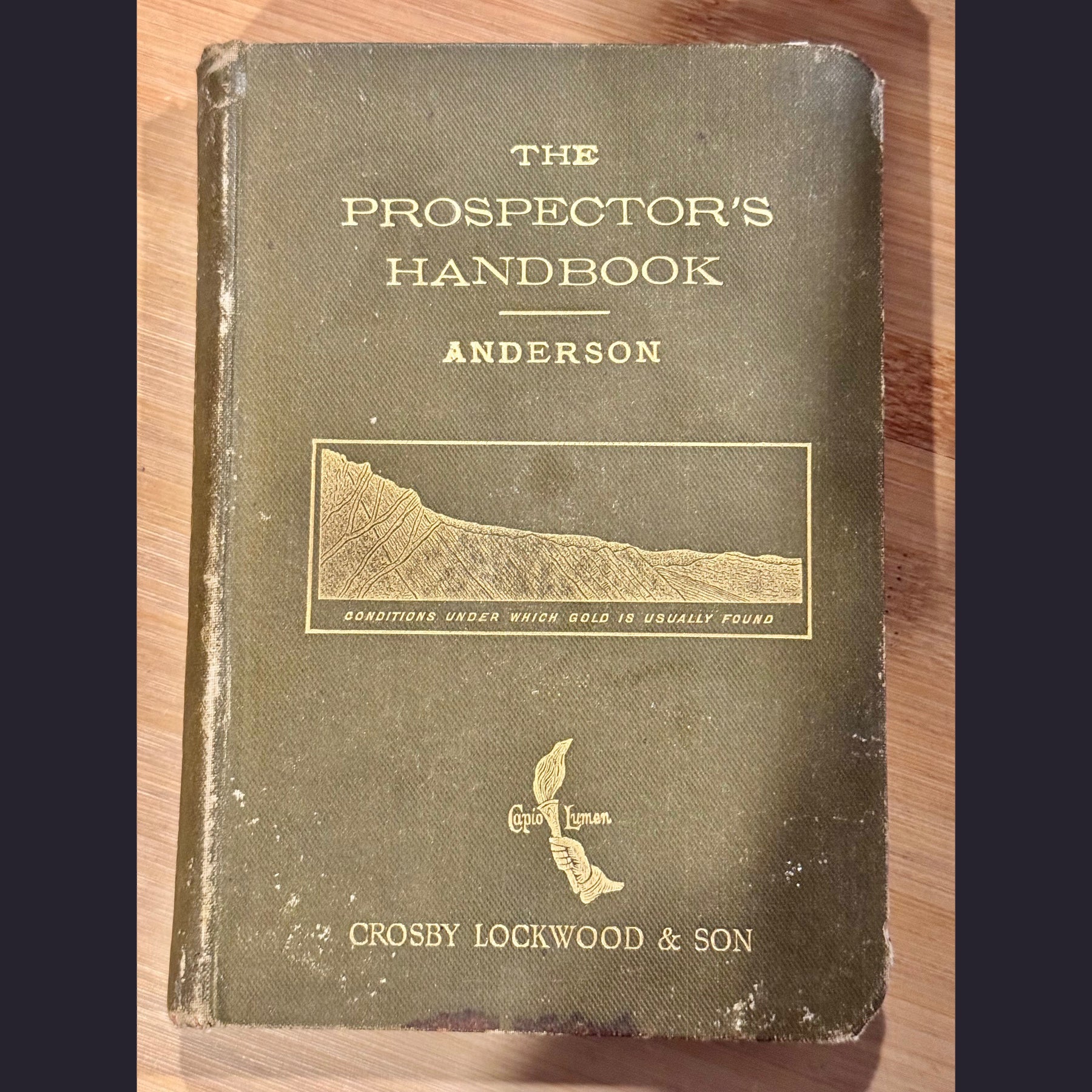
The Prospectors Handbook: Conditions Where Gold Is Usually Found (Part 1)
We recently found an old 1895 book entitled "The Prospectors Handbook: Conditions Under Which Gold Is Usually Found"
We found this book has some really interesting bits of information throughout it that we think could really help our prospecting community.
I have taken it upon myself to begin to paraphrase the book, because the language is dense and archaic. I will break the book up into many Blog Articles so stay tuned for more!
(NOTE: Keep in mind some of the geological terms are not current, and may have different names and/or definitions today.)
THIS BLOG ARTICLE IS PART 1
The prospector should always be looking in the lowest places, streams, riverbeds, valleys, but also the oceans shores such as Oregon, California, New Zealand, and elsewhere.
Look for tumbled loose rocks in ravines, gulches, eddies, or dry waterholes where heavy matter is left from floods, glaciers or heavy snow. Holes, channels, and fissures in solid rock will trap heavy debris.
Keep in mind that in searching rivers, larger gold will probably be found closer to the source of the mountain from which the stream runs. This is because the gold is washed down an inclined plane, with the heavier particles/nuggets being dropped first, and the lighter material being carried further downstream.
The richest gold deposits often occur
- Where the current has been broken by a sudden drop, or a change in direction. Especially where the turning is so sharp one side of the stream is a cliff and the other a gentle slope (the gentle slope is where the heavy metals are).
- On benches higher up that run parallel to the creek in canyons or steep ravines. These benches should be checked for larger debris and boulders. Try to work all the way down to the bedrock to get to the paydirt, especially if the gravel is loose. Sometimes gold will be in clay if there is a clay layer just above the bedrock.
Finding the Source
If a good alluvial deposit (gold that has been washed down) is found, it is advisable to seek its source (gold veins) in the higher surrounding areas. Finding likely gold-bearing rock further downstream, one can travel up until they see similar stones cease to be found. Then hike up the hillside to find the parent stone from where they detached.
Often there is a pile of debris at the base of the hillside, and higher up there will be boulders covering the bedrock underneath.
By picking out the stones of interest floating on the surface of the hillside (“float” stones), one can trace the perimeter of the lode (gold source) hidden beneath.
Float stones will be types of rock rich in gold-bearing minerals like the ones mentioned at the end of this article (see below).
Quartz bearing rock is to be sought out. Specifically quartz bearing rock that has a decomposed surface that appears porous or “honeycombed” and bears rich colors of yellow sulfides and red iron stain. Greens, blacks, browns and grays are also indicative of sulfides.
Old Time German miners have a saying:
“There is no lode so good as the one which has an iron hat.” Pointing out how important traces of iron are when searching for gold-bearing rock. This red color of iron oxide is in fact the result of decomposing iron pyrites.
One keeps a sharp eye out for quartz, fluor spar (fluate of lime), and calc spar as these are all rocks known to form the matrix of a mineral vein.
'Fluor' is seen in dark cubes, or very small cubic crystals scattered among brown limestone. These crystals are often so small that the eye cannot discern them--like sand grains. Fluor is often found with Quartz and Galena (a gray lead sulfide).
When trying to trace the float stones trajectory, keep in mind the angles of the slope of the hill. The largest, least weathered stones will be closest to the source. When float stones disappear, that is where the prospector can begin digging a pit, or a diagonal crosscut to try to hit the vein.

These next two figures (below) are displaying how faults in the geology may occur and cause the lodes to be altered in irregular directions. The key here is to decipher the deviation by looking at the position of the bed. which the lode rests in.
In fig. 2 for example. The bed which the vein/lode rests in is "C". One just has to keep their eye on the layer of "C" and if it shifts by way of a fault to find the new location of the the vein/lode.


ROCK CLASSIFICATION
Familiarize yourself with these rocks:
Granite, Diorite, Schists, Silurian rocks, & examine as many gossans as you can, as well as all kinds of oxides, not forgetting tinstone, in various colors; carbonates, chlorides, & various metals. Finally, sulfides of metals which may be met deeper in lodes or deposits.
- Igneous (Rocks which have been subjected to heat)
Volcanic (Those that have been cooled at or near the surface)
- Trachyte (rough, grayish in color, and light in weight)
- Basalt (blackish or brown, heavier and with fewer holes in it than trachyte)
- Phonolite Andesite (of which porphyrite is an altered variety)
- Dolerite (with crystals more prominent than in basalt) | elvans (including quartz-porphyry | pitchstone. These last three occur as dykes or intrusive sheets | the last two are offshoots of granite formations.
- Obsidian (usually transparent and like bottle glass, or pumice)
Plutonic (those that have cooled at some depth below the surface)
- Felstone (of various colors, and more compact than trachyte)
- Granite, Porphyry, syenite, diorite, gabbro. These usually have a distinctly crystalline structure, frequently bearing large crystals.
- Gneiss (in composition like granite, but foliated (banded/striped))
- Mica schists (quartz and mica)
- Hornblende schists, tale schists, are some foliated forms of metamorphic rocks.
- Serpentine is supposed to belong to this class.
- Gravel (made up of loose rounded pebbles), conglomerates and breccias (sedimentary rocks composed of large angular fragments. The spaces between the angular fragments are filled with a matrix of smaller particles and mineral cement that binds the rock together)
- Grit (in which the grains, usually of quartz, are cemented together)
- Sandstone (in which quartz grains are very fine)
- Sand (in which the grains are loose)
- Clay (silicate of alumina and of a plastic nature)
- Slates (hardened clay, which displays cleavage across the bedding)
- Shales (hardened laminated clay)
- Marl (clay containing carbonate of lime)
- Loam (clay mixed with fine sand)
- Flint (nearly pure silica)
- Limestone, chalk, marble (made up of carbonate of lime)
- Delomite (carbonate of lime and magnesia)

